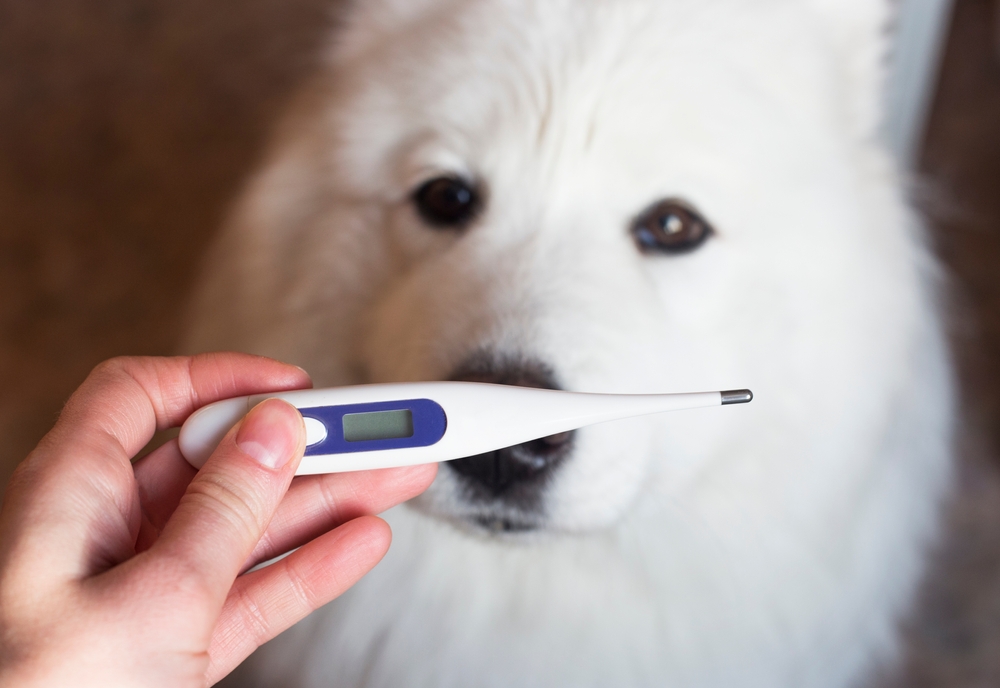Check Your Dog’s Vital Signs at Home
Updated on October 08, 2024

I truly believe that working with your dog’s veterinarian is the best way to keep your pet healthy, and the basis of that relationship is regular wellness checks. But I also believe in the value of being a well-informed and educated pet parent. You’re the “Dr. Mom” or “Dr. Dad” for your pet: the first line of attack against disease.
Do you have the information you need to properly advocate for your pet? Do you know how to take your dog’s temperature and check his heart rate and respiratory rate? Do you know how to assess what’s normal for each of those things? Don’t worry if the answer is no; the good news is that it’s pretty easy to learn. Here’s what you need to know.
All featured products are chosen at the discretion of the Vetstreet editorial team and do not reflect a direct endorsement by the author. However, Vetstreet may make a small affiliate commission if you click through and make a purchase.
1. How to Take Your Dog’s Temperature
If you want to pop for a thermometer that reads your pet’s temperature by merely sticking the probe inside her ear, you’ll have it easy. But it’s not that hard to take a dog’s temperature the old-fashioned way, with a traditional glass thermometer. Or you can spend just a little bit more for a digital rectal thermometer, which is easy to read and beeps when it’s ready to remove. If you’re using a rectal thermometer, lubricate it with water-based medical lubricant.
This process is a lot easier with help: Have someone hold your dog’s muzzle gently and praise for good behavior. Gently and slowly insert the device about one or two inches into your dog’s rectum, but don’t force it. Leave the thermometer in place for two minutes (or until it beeps, if it’s digital) and then check and record the temperature. In a normal, healthy dog, it’s about the same as for cats; the thermometer should read between 100 and 102.5 degrees Farenheit. Call your veterinarian if it’s below 99 or over 103, or if you see evidence of blood, diarrhea or a black, tarry stool on the thermometer.
2. How to Take Your Dog’s Heart Rate
Dogs come in all shapes and sizes, and so do their hearts — and those heart rates vary a great deal. That’s why it’s important for you to become familiar with what’s normal for your pet so you’ll know in, well, a heartbeat when a reading is wrong. You’ll need a watch with a second hand, a stopwatch or … your smartphone! Feel your dog’s heartbeat with one hand over his left side, just behind his front leg. Count the number of beats in 15 seconds and multiply by four to get the heart rate in beats per minute (bpm).
Small dogs, puppies and dogs who are out of shape will have faster heartbearts, and large dogs and those in good physical condition will have slower rates. “Normal” ranges from 60 to 140 beats per minute in a resting dog — 60 to 100 in big dogs and 100 to 140 in little ones. While you can check the rate with your hand over the heart, you can also take a pulse by gently feeling the beat near the inside top of your dog’s hind leg. The heart rate will be the same both places, so do whichever is easier for you and your dog. Because normal varies so much, it’s difficult to assess abnormal without a baseline, so take your dog’s heart rate a few times and make notes. If you’re concerned about what you’re finding, discuss your results with your veterinarian.
3. How to Take Your Dog’s Respiratory Rate
Let me say this first: If your dog is panting frantically and is glassy-eyed, don’t count anything except the minutes it will take you to get to a veterinarian. Your dog is in critical condition from overheating.
OK, now that I’ve gotten that out of the way, a normal, rested, non-panting dog should breathe between 10 and 35 times per minute. Count the chest movement for one minute to get your reading.
The time to learn how to take your dog’s heart rate, respiratory rate and temperature is before you are faced with an emergency. Practice at home when you and your dog are relaxed so you know what to do when you have a concern. And remember: If you’re having difficulty learning how to check vital signs on your own, ask your veterinarian to show you how the next time you take your dog in for a wellness exam.
Pet Health Insurance Can Help
Unexpected veterinary bills can make caring for your pet challenging. Don’t let financial stress get in the way of making the best decisions for your pet. Pet health insurance can cover surprise costs such as veterinary visits, prescription medications, and life-saving procedures.
Review personalized options for your pet below:

